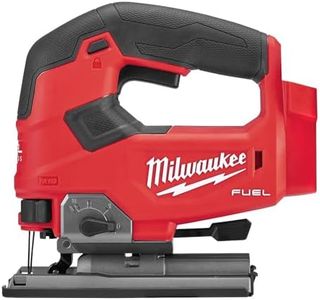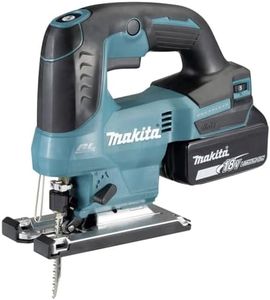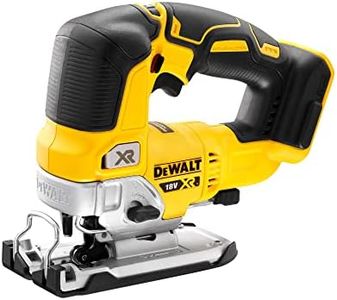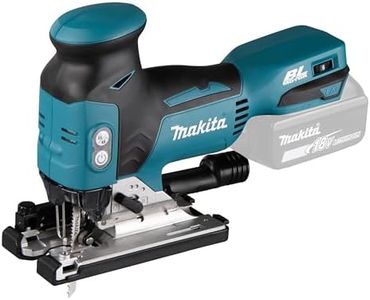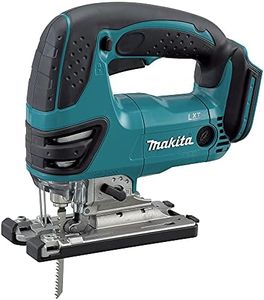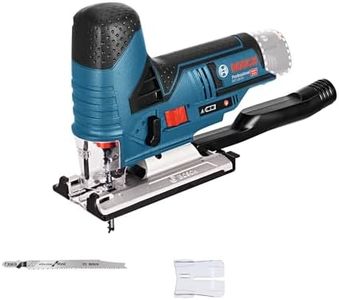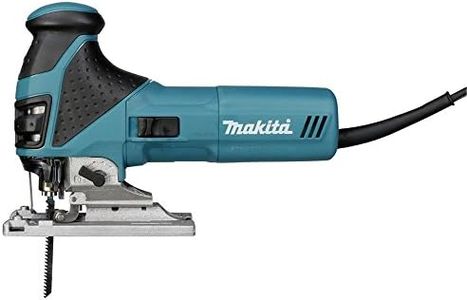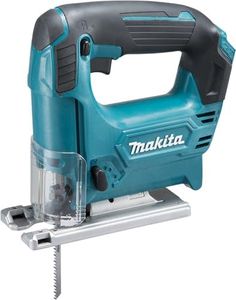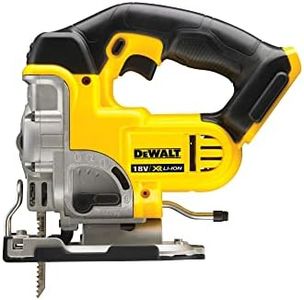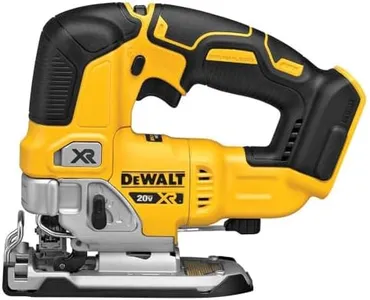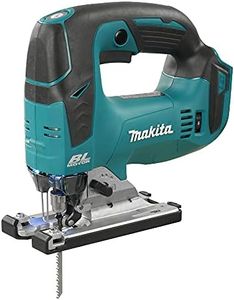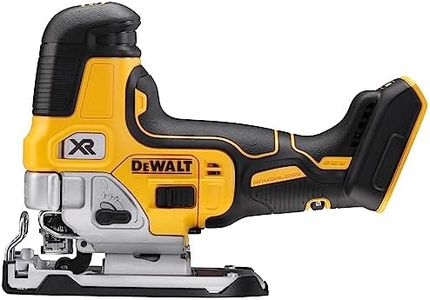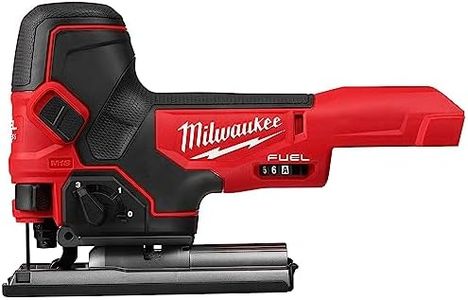We Use CookiesWe use cookies to enhance the security, performance,
functionality and for analytical and promotional activities. By continuing to browse this site you
are agreeing to our privacy policy
10 Best Jig Saws
From leading brands and best sellers available on the web.Buying Guide for the Best Jig Saws
Choosing a jig saw can feel overwhelming due to the range of features and options. The best approach is to think about how you plan to use the tool: will it be mainly for DIY projects at home, more demanding woodworking, or even professional construction tasks? Focusing on your typical materials and types of work you want to do will help you sort through the specifications. When comparing different models, keep an eye on features that support safety, flexibility, and the longevity of the tool.Power (Motor Wattage or Voltage)The power of a jig saw, often measured in watts for corded and voltage for cordless versions, determines the kind of materials you can cut and the smoothness of your work. Lower power (around 400-500 watts or 12 volts) is usually sufficient for light materials like thin wood or plastics, suitable for simple crafts or light home repairs. Medium power (500-700 watts or 18 volts) suits most home projects, including cutting thicker wood, plastic, or thin metals. Higher power (700+ watts or 20+ volts) is ideal for heavy-duty tasks including frequent cutting of hard wood or metal. To choose the right one, think about what you'll cut most often—pick lower power for lightweight jobs, and higher power if you plan to cut dense materials or work for extended periods.
Stroke Rate (SPM – Strokes Per Minute)Stroke rate refers to how many times the blade moves up and down per minute, and it impacts how quickly and smoothly you can cut. Lower SPM settings are best for delicate cuts, tight curves, and reducing splintering, while higher SPM is better for faster, straight cuts in softer materials. Many jig saws come with variable speed control, allowing you to adjust according to the material and task. If you expect to work with different materials or have a range of projects, opt for a model with variable speed; if you’ll use it primarily for simple straight cuts in soft material, a single speed model might suffice.
Orbital ActionOrbital action is a feature that lets the blade move slightly forward as it rises, making cutting faster and easier, especially through thick or hard materials. More aggressive orbital settings can speed up straight cuts but may leave rougher edges, while less or no orbital action is better for smooth curves or finishing work. Models often offer adjustable orbital settings, so you can switch between aggressive and fine settings. If you plan to make a lot of straight or rough cuts, look for multiple orbital settings; for precise or curved cuts, less orbital action may be more suitable.
Blade Type and Change MechanismJig saws can use different blade types – either 'T-shank' or 'U-shank'. T-shank blades are more common today due to their easier and tool-free changing feature, while U-shank blades may need an extra step. The ability to quickly change blades is important if you expect to work on varied materials or need regular blade swaps. If convenience and speed matter to you, prioritize a tool-free, quick blade change system and compatibility with widely available blades.
Bevel CapacityBevel capacity is the ability of the base plate (shoe) to tilt, allowing you to cut angles (often up to 45 degrees). This feature is essential if you need to make angled cuts for joints, trim work, or decorative details. Some models offer preset stops at common angles for quick adjustments. If your projects involve only straight cutting, bevel capacity isn’t crucial, but for creative or finishing work, a model with easy and accurate bevel adjustments can be very useful.
Dust ManagementDust management refers to features like built-in blowers or dust extraction ports, which help keep your cutting line visible and your workspace cleaner. A clear line of sight ensures accuracy, especially with intricate cuts. If you value a tidy environment or plan to cut indoors frequently, look for dust blowers or easy attachment to a vacuum system; for occasional or outdoor use, this feature may be less important.
Ergonomics and Safety FeaturesComfortable grips, light weight, reduced vibration, and safety switches make using a jig saw safer and reduce fatigue during longer projects. If you anticipate using the jig saw for extended periods, prioritize a model that feels balanced in your hand and offers good grip. Safety features like trigger locks, blade guards, and stable footplates should also be considered if you’re new to power tools.
